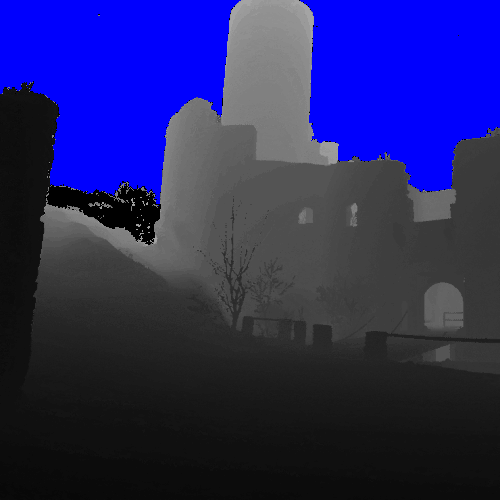

Below I show the range image of the ruin kollmitz (blue regions correspond to where the echo of the laser was not detected). To the right is an animation of the image filtered by a range of sizes of the -d2G/dy2 filter.

The plot below is similar to that shown for the lambertian sphere. The lower histogram includes all pixels in the filtered images. The upper plot only includes those pixels whose calculation does not depend on a blue pixel.
As done in the case of the Lambertian Sphere, the plot below shows covarience as a function of kernel width. Again, the blue line includes all pixels, and the green line is only taken over non-blue range pixels.






